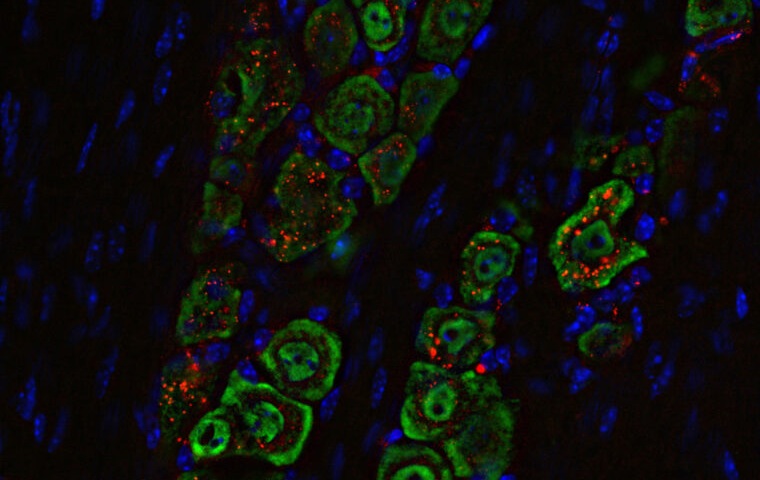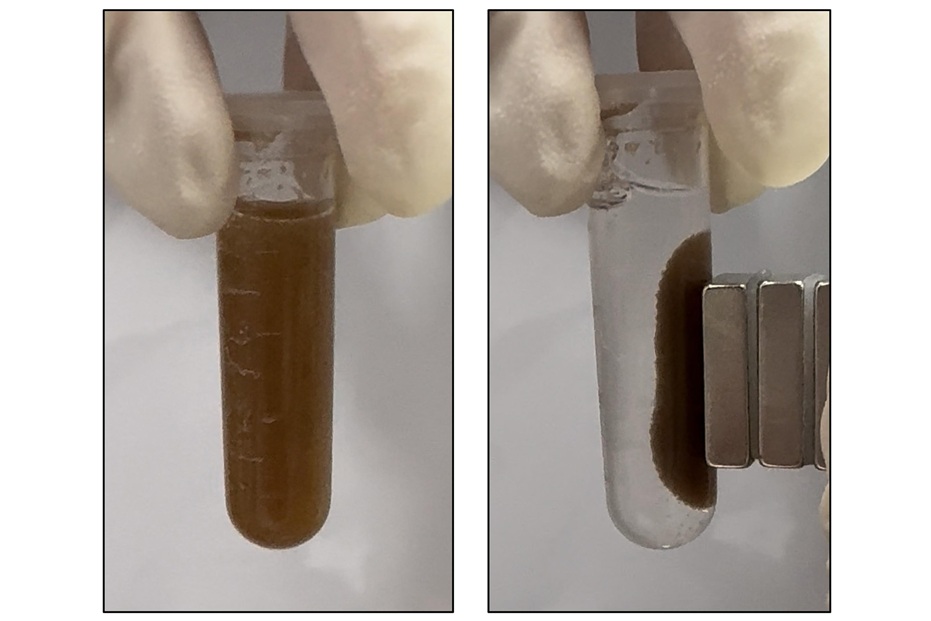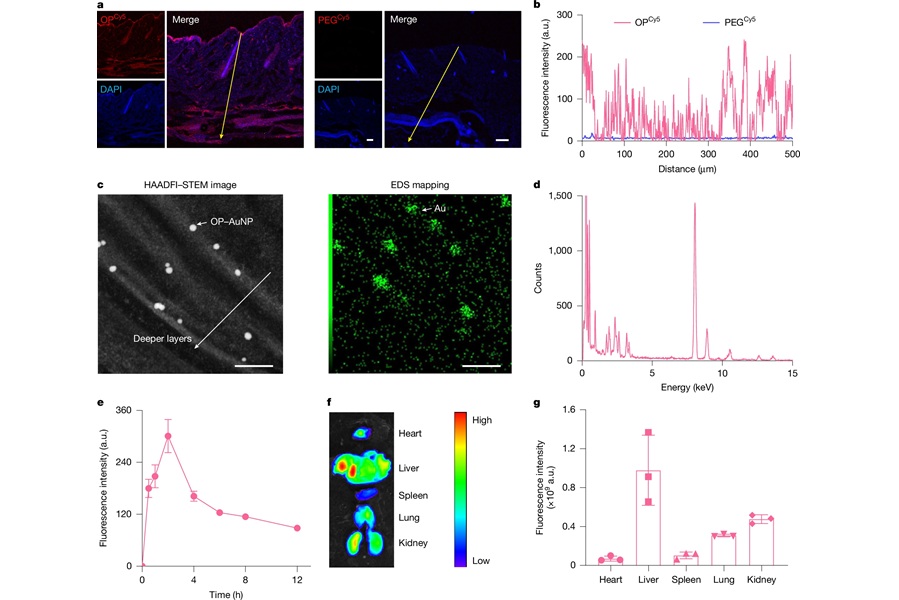Pioneering Technology Enables Real-Time Detection of Residual Breast Cancer During Lumpectomy
|
By HospiMedica International staff writers Posted on 29 Jan 2025 |

Breast cancer is the most frequently diagnosed cancer in women, with lumpectomies being the most common treatment approach. About 65% of women diagnosed with breast cancer undergo a lumpectomy, also referred to as breast-conserving surgery, in which the tumor and a small margin of surrounding tissue are removed. This tissue is then sent to pathology for analysis, which often results in a waiting period of several days or even weeks before determining whether further surgery is required. While lumpectomies save lives by removing as much cancer as possible while preserving healthy breast tissue, up to 36% of patients may require a second surgery due to undetected residual cancer. This can lead to increased anxiety, additional costs, delays in receiving adjuvant therapies, and potential negative impacts on cosmetic outcomes. Now, a pioneering fluorescence-guided imaging technology for breast cancer detection helps surgeons identify residual cancer that may otherwise be missed, enabling more thorough tumor removal.
Lumicell (Newton, MA, USA) has announced the U.S. commercial availability of the LumiSystem, which combines two FDA-approved products: LUMISIGHT, an optical imaging agent that fluoresces at sites of suspected cancerous tissue, and the Lumicell Direct Visualization System (DVS), an imaging device that provides real-time fluorescence guidance during lumpectomy surgeries. LUMISIGHT and Lumicell DVS work together by harnessing the body's immune response to solid tumors, such as those in breast cancer. LUMISIGHT (pegulicianine) is injected into the patient before surgery and, within two hours, becomes activated by enzymatic activity in and around the cancerous tissue. Once the surgeon removes the primary tumor and completes the standard procedure, the Lumicell DVS handheld probe is used to scan the breast cavity for any remaining cancer cells.
In real-time, images are captured from within the breast cavity, processed, and interpreted by LumiSystem’s patient-calibrated cancer detection software. If the software detects regions that are suspicious for remaining cancer, these areas are highlighted on the screen for the surgeon’s attention. This real-time feedback enables the surgeon to pinpoint additional tissue that needs to be removed. Unlike traditional detection methods, which only assess tissue after it has been surgically removed, LumiSystem allows surgeons to visualize cancer directly within the breast during surgery. This capability significantly enhances the likelihood of achieving a more complete resection and reduces the need for follow-up procedures. In the INSITE pivotal trial, LumiSystem demonstrated an 84% diagnostic accuracy rate, improving surgical outcomes in 10% of patients treated. By identifying cancerous tissue that may have been completely missed by surgeons and pathologists, LumiSystem offers a more thorough approach to breast-conserving surgery and ultimately improves patient care.
"Today, with LumiSystem's commercial launch, we empower surgeons with a groundbreaking tool that detects cancer where and when it matters most, inside the breast cavity and in real-time," said Howard Hechler, CEO of Lumicell. "This launch reflects Lumicell's unwavering commitment to enhancing surgical outcomes for patients."
Related Links:
Lumicell
Latest Surgical Techniques News
- Novel Endoscopy Technique Provides Access to Deep Lung Tumors
- New Study Findings Could Halve Number of Stent Procedures
- Breakthrough Surgical Device Redefines Hip Arthroscopy
- Automated System Enables Real-Time "Molecular Pathology" During Cancer Surgery
- Groundbreaking Procedure Combines New Treatments for Liver Tumors
- Ablation Reduces Stroke Risk Associated with Atrial Fibrillation
- Optical Tracking Method Identifies Target Areas in Robot-Assisted Neurosurgery
- General Anesthesia Improves Post-Surgery Outcomes for Acute Stroke Patients
- Drug-Coated Balloons Can Replace Stents Even in Larger Coronary Arteries
- Magnetic Kidney Stone Retrieval Device Outperforms Ureteroscopic Laser Lithotripsy
- Absorbable Skull Device Could Replace Traditional Metal Implants Used After Brain Surgery
- Magic Silicone Liquid Powered Robots Perform MIS in Narrow Cavities
- 'Lab-on-a-Scalpel' Provides Real-Time Surgical Insights for POC Diagnostics in OR
- Biodegradable Brain Implant Prevents Glioblastoma Recurrence
- Tiny 3D Printer Reconstructs Tissues During Vocal Cord Surgery
- Minimally Invasive Procedure for Aortic Valve Disease Has Similar Outcomes as Surgery
Channels
Critical Care
view channel
Nasal Drops Fight Brain Tumors Noninvasively
Glioblastoma is one of the most aggressive and fatal brain cancers, progressing rapidly and leaving patients with very limited treatment options. A major challenge has been delivering effective therapies... Read more
AI Helps Optimize Therapy Selection and Dosing for Septic Shock
Septic shock is a life-threatening complication of sepsis and remains a leading cause of hospital deaths worldwide. Patients experience dangerously low blood pressure that can rapidly lead to organ failure,... Read more
Glowing Bacteria ‘Pills’ for Detecting Gut Diseases Could Eliminate Colonoscopies
Diagnosing gastrointestinal diseases such as colitis and colorectal cancer often relies on colonoscopy, an invasive procedure that many patients avoid despite ongoing symptoms like bleeding, cramping, and diarrhoea.... Read morePatient Care
view channel
Revolutionary Automatic IV-Line Flushing Device to Enhance Infusion Care
More than 80% of in-hospital patients receive intravenous (IV) therapy. Every dose of IV medicine delivered in a small volume (<250 mL) infusion bag should be followed by subsequent flushing to ensure... Read more
VR Training Tool Combats Contamination of Portable Medical Equipment
Healthcare-associated infections (HAIs) impact one in every 31 patients, cause nearly 100,000 deaths each year, and cost USD 28.4 billion in direct medical expenses. Notably, up to 75% of these infections... Read more
Portable Biosensor Platform to Reduce Hospital-Acquired Infections
Approximately 4 million patients in the European Union acquire healthcare-associated infections (HAIs) or nosocomial infections each year, with around 37,000 deaths directly resulting from these infections,... Read moreFirst-Of-Its-Kind Portable Germicidal Light Technology Disinfects High-Touch Clinical Surfaces in Seconds
Reducing healthcare-acquired infections (HAIs) remains a pressing issue within global healthcare systems. In the United States alone, 1.7 million patients contract HAIs annually, leading to approximately... Read moreHealth IT
view channel
EMR-Based Tool Predicts Graft Failure After Kidney Transplant
Kidney transplantation offers patients with end-stage kidney disease longer survival and better quality of life than dialysis, yet graft failure remains a major challenge. Although a successful transplant... Read more
Printable Molecule-Selective Nanoparticles Enable Mass Production of Wearable Biosensors
The future of medicine is likely to focus on the personalization of healthcare—understanding exactly what an individual requires and delivering the appropriate combination of nutrients, metabolites, and... Read moreBusiness
view channel
Philips and Masimo Partner to Advance Patient Monitoring Measurement Technologies
Royal Philips (Amsterdam, Netherlands) and Masimo (Irvine, California, USA) have renewed their multi-year strategic collaboration, combining Philips’ expertise in patient monitoring with Masimo’s noninvasive... Read more
B. Braun Acquires Digital Microsurgery Company True Digital Surgery
The high-end microsurgery market in neurosurgery, spine, and ENT is undergoing a significant transformation. Traditional analog microscopes are giving way to digital exoscopes, which provide improved visualization,... Read more
CMEF 2025 to Promote Holistic and High-Quality Development of Medical and Health Industry
The 92nd China International Medical Equipment Fair (CMEF 2025) Autumn Exhibition is scheduled to be held from September 26 to 29 at the China Import and Export Fair Complex (Canton Fair Complex) in Guangzhou.... Read more














